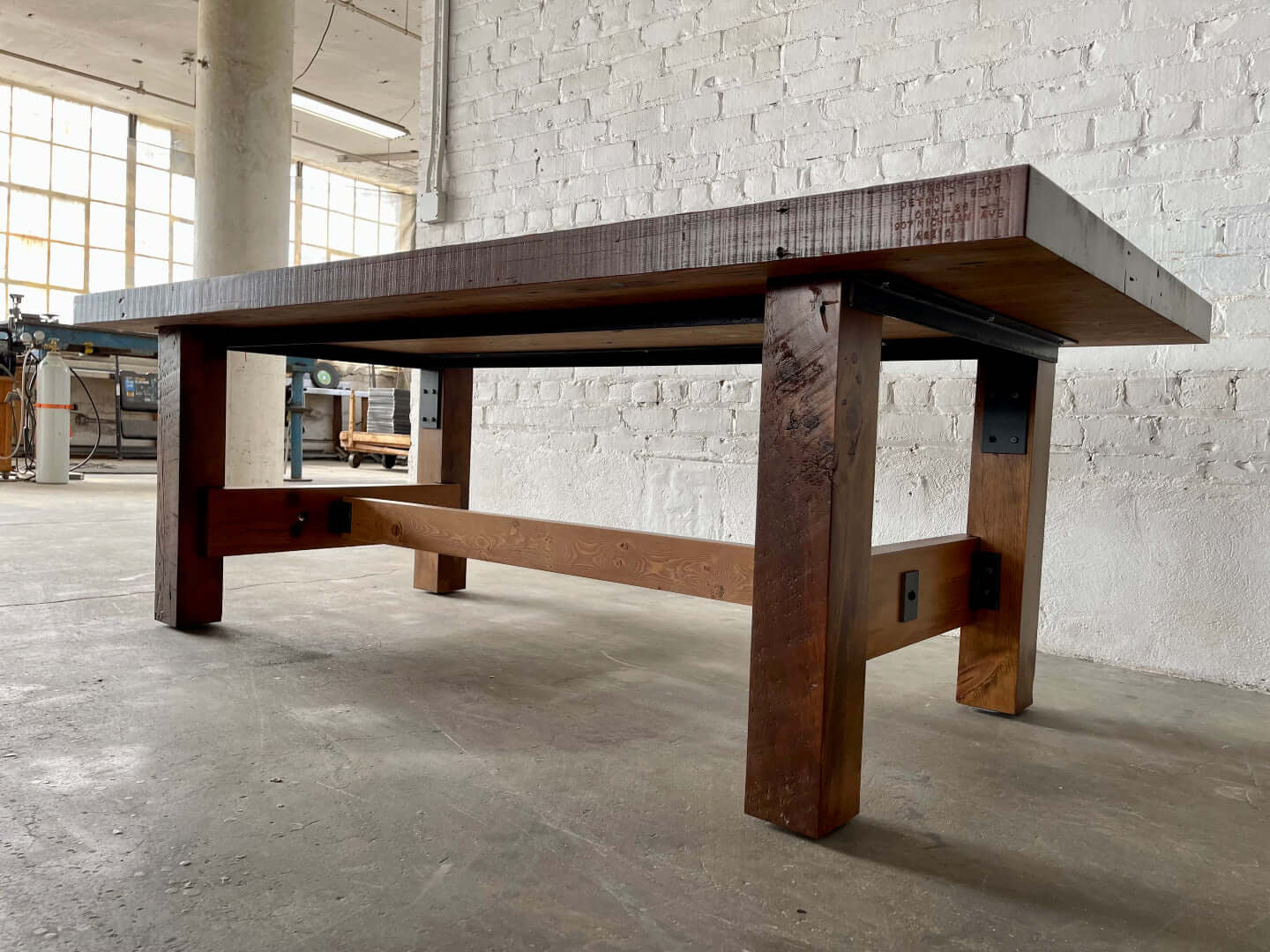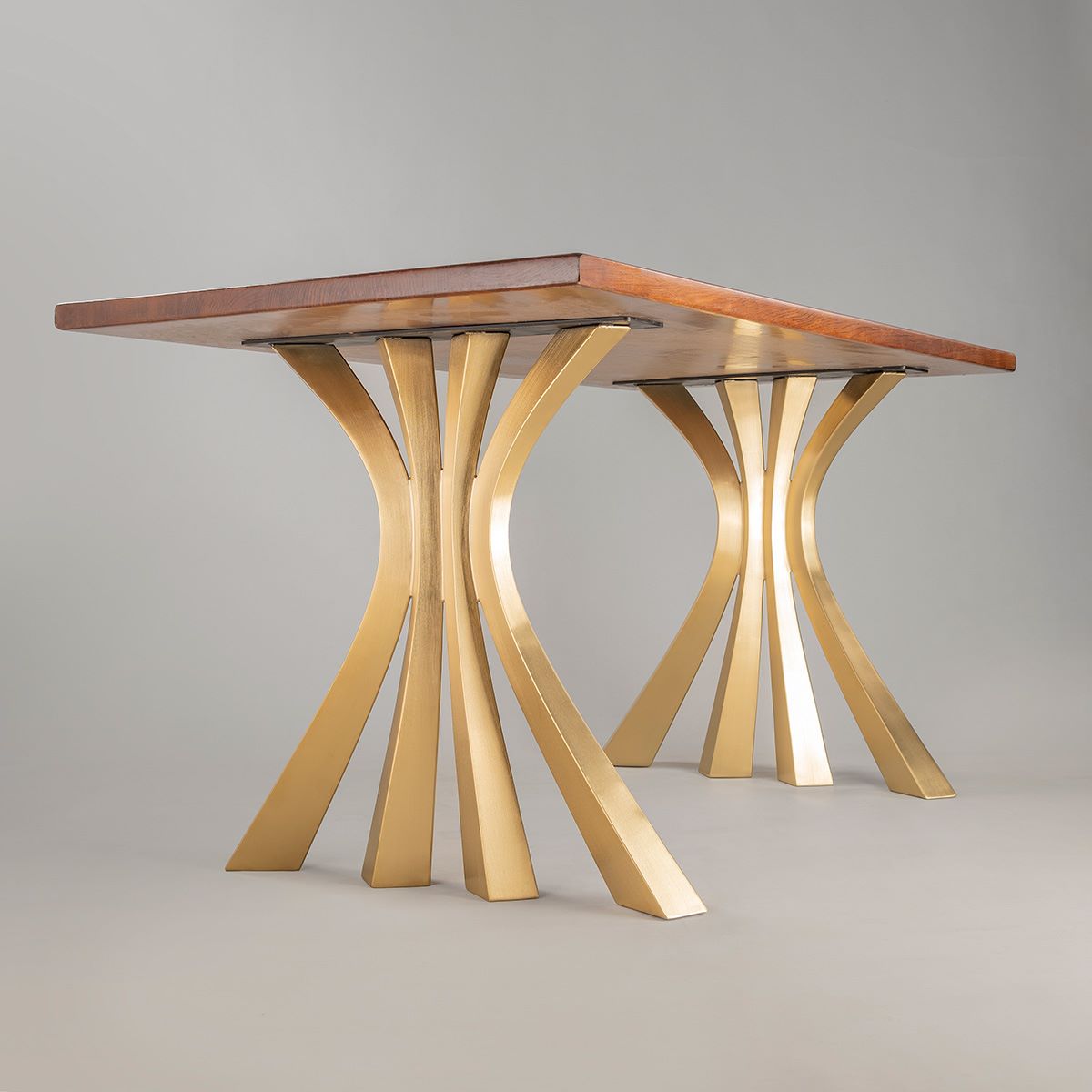Achieve Modern Beauty Utilizing Sleek Dining Table Legs Wood Styles
Checking Out the Different Kinds Of Eating Table Legs Timber for Your Dining Area
The option of dining table legs timber can exceptionally impact both the visual and functional high qualities of your eating space. Strong timber options, such as oak and walnut, supply a timeless appearance with unmatched sturdiness, while engineered timber options supply innovative styles that mimic the splendor of natural grains.
Strong Wood Options

Moreover, solid timber is renowned for its toughness and durability. Unlike engineered products, strong wood is much less susceptible to bending and damage with time when properly preserved. This makes it a perfect option for households or those that frequently organize celebrations. Each piece of strong wood is unique, showcasing specific qualities that include in the appeal and character of the table.
Additionally, strong timber can be finished in countless means, ranging from natural oils to discolored surfaces, permitting house owners to individualize their furnishings to match their style. In recap, choosing strong wood for eating table legs not only makes sure structural honesty but additionally improves the visual allure of the dining location, making it a worthwhile investment for any type of home.
Engineered Timber Alternatives

Plywood, built from numerous layers of wood veneer, is especially solid and steady, making it a superb selection for eating table legs. Its split make-up allows it to hold up against adjustments in humidity and temperature level far better than conventional solid wood. MDF, on the various other hand, provides a smooth surface for paint or veneering, allowing designers to attain a sleek look while keeping structural honesty.
When picking engineered wood choices, it is vital to take into consideration the intended use and desired aesthetic. These products not only enhance the capability of dining areas but likewise enable for better design flexibility, making certain that contemporary and traditional designs can coexist sympathetically.
Reclaimed Timber Features
Redeemed timber uses a distinct blend of sustainability and character, making it an increasingly popular option for eating table legs. Sourced from old barns, factories, and various other structures, reclaimed wood personifies a background that brand-new materials simply can not reproduce. Each item carries its own tale, noted by unique imperfections, knots, and varying grain patterns, which add to a table's distinct aesthetic allure.
Along with its visual beauty, recovered look at this now wood is an environmentally pleasant option. By repurposing previously made use of materials, it decreases the demand for new lumber, hence helping to decrease and preserve woodlands waste. This aligns with a growing consumer preference for lasting techniques in home furnishings.
Furthermore, redeemed wood is commonly extra durable than recently harvested timber due to its age. The natural drying procedure that reclaimed wood goes through lead to a denser and stronger material, making it less at risk to bending and splitting. This enhances the longevity of eating tables, enabling them to hold up against the rigors of daily usage.
Softwood vs. Hardwood
When picking dining table legs, understanding the differences between softwood and hardwood is vital for accomplishing both aesthetic and practical objectives. They typically show an even more rustic appearance, making them suitable for casual or country-style eating areas.
On the other hand, hardwoods, sourced from deciduous trees like maple, oak, and cherry, are renowned for their thickness, strength, and resilience. The elaborate grain patterns and rich shades of woods give a timeless and advanced charm, making them ideal for official dining setups. While hardwoods have a tendency to be a lot more pricey and larger, their durability versus damage usually validates the investment.
Eventually, the choice between softwood and wood for dining table legs ought to line up with your layout vision, use needs, and spending plan, guaranteeing that your dining area reflects your individual design while continuing to be practical in time.

Therapies and coatings
The aesthetic appeal and durability of eating table legs can be dramatically enhanced through different coatings and treatments. These processes not just shield the timber from damages however also elevate its appearance, allowing it to enhance diverse indoor designs.
One typical therapy is discoloring, which permeates the wood and improves its natural grain while adding shade. Discolorations give a rich, stylish look, allowing home owners to match their furniture with existing decoration. On the other hand, clear finishes such as polyurethane or varnish develop a safety layer without modifying the timber's initial color, ensuring toughness versus deterioration.
In addition, all-natural oils, like tung or linseed oil, nourish the timber and provide a refined shine, all while being environment-friendly. These oils allow the surface to take a breath, protecting against wetness build-up and prospective warping.
For those seeking a rustic appeal, troubled or weather-beaten coatings can be put on develop an aged look, adding personality to the item. Eventually, the choice of finishes and therapies depends on individual preference, preferred aesthetics, and the details wood kind, making it important to take into consideration these elements when selecting table legs for your room.
Final Thought
Finally, the selection of table leg products considerably affects both the useful and aesthetic aspects of site here an eating area. Solid woods, crafted choices, and redeemed choices each offer distinct benefits, dealing with numerous choices and needs. Comprehending the distinctions in between softwoods and woods, along with proper coatings and therapies, enables informed decision-making. Go Here Ultimately, the option of wood type must straighten with wanted design, sturdiness, and ecological factors to consider, improving the total eating experience.
The choice of dining table legs wood can profoundly affect both the practical and aesthetic qualities of your dining area - Dining Table Legs Wood. Strong timber alternatives, such as oak and walnut, supply a timeless appearance with unmatched resilience, while engineered wood alternatives use ingenious designs that imitate the richness of all-natural grains. Solid timber offers a timeless top quality that can boost the total design of an eating area. Each piece of strong wood is one-of-a-kind, showcasing specific characteristics that include to the charm and personality of the eating table
Additionally, redeemed timber is often a lot more long lasting than newly harvested wood due to its age.